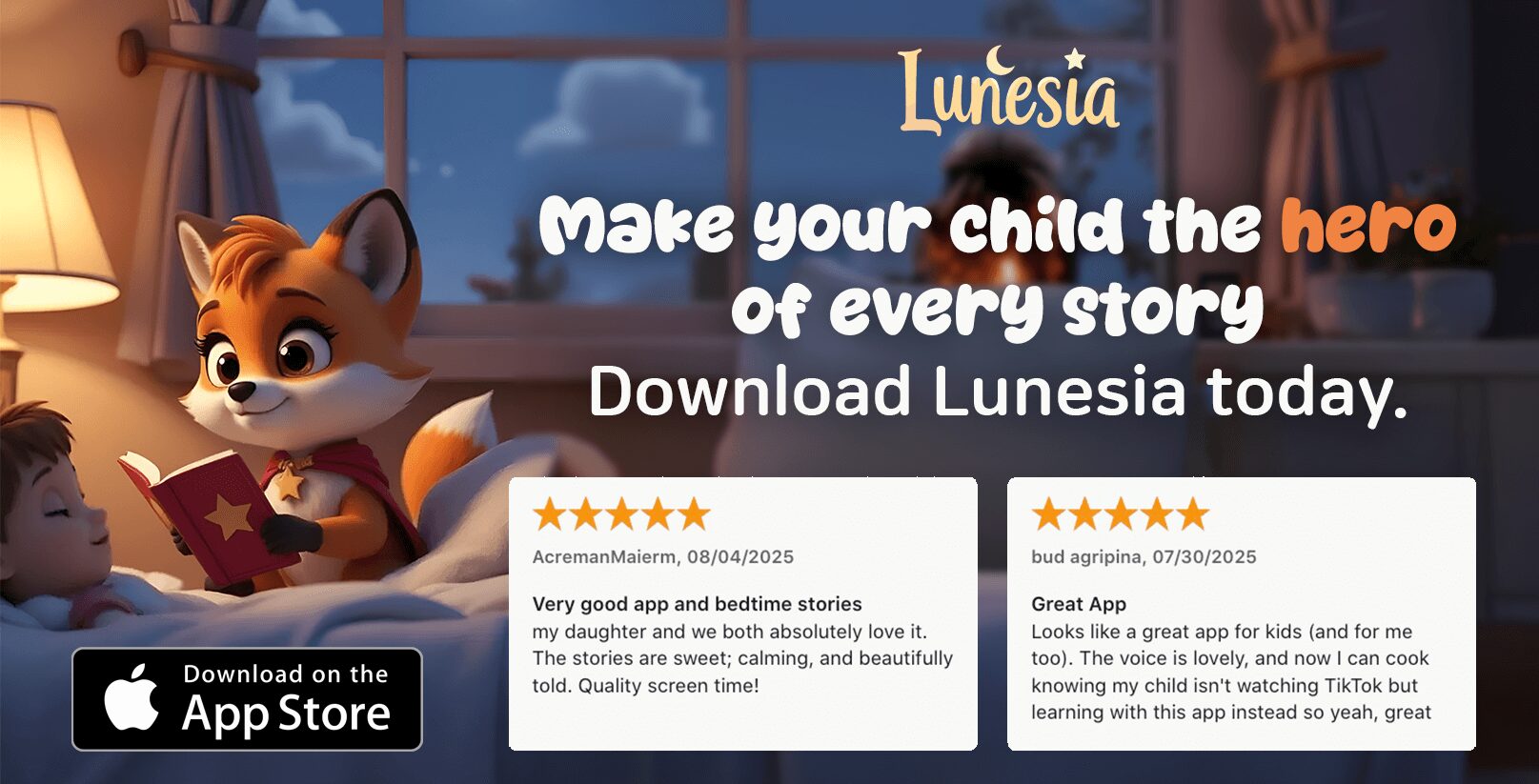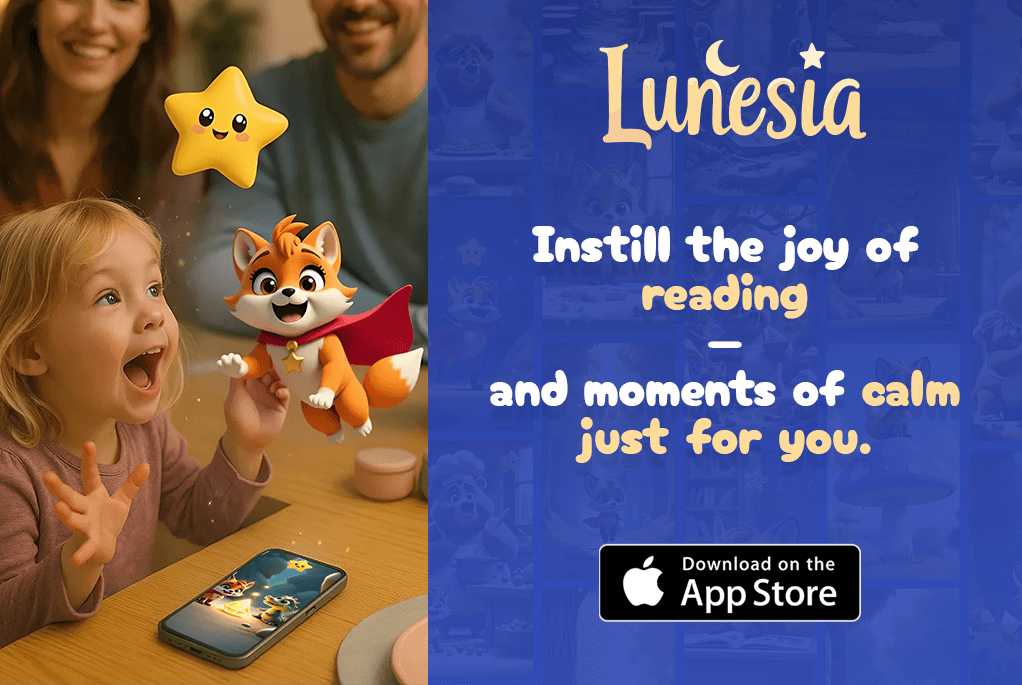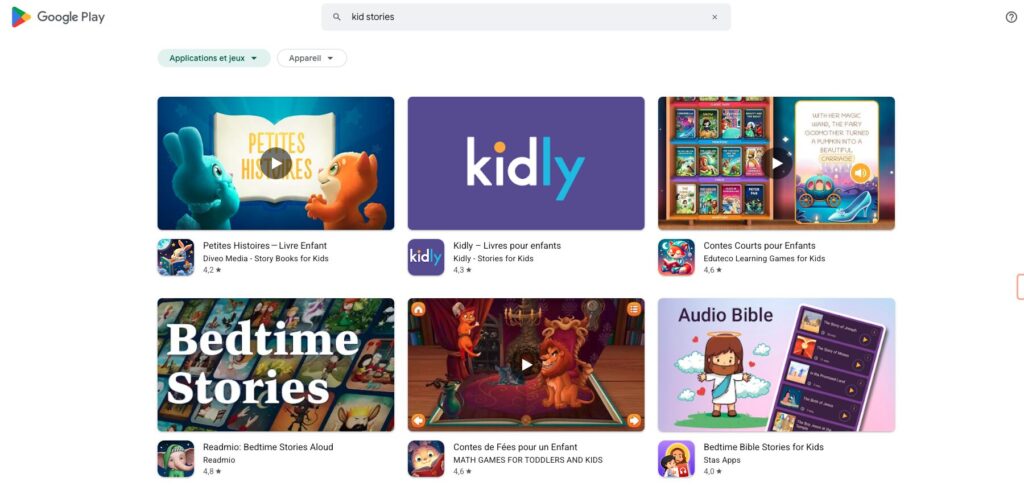Ready to help your child overcome the fear of seeing the doctor? You’re not alone! Many parents stress out about those dreaded medical visits that can easily turn into tearful stand-offs. But guess what? With the right mindset, a pinch of creativity, and some practical strategies, you can transform that tense waiting room scenario into a calmer, more positive experience. Today, I’m sharing my personal adventures and misadventures in tackling this issue, plus revealing one fantastic ally in the process: Lunesia (https://lunesia.app). As a parent who has been through more than one meltdown in the pediatrician’s office, I’ve tried it all—trust me. And now, I’m here to hand over my best tips so you can skip the trial-and-error phase and jump right to success. If you’re ready to find out why your kid might freak out at the mere mention of “vaccines” and discover how to turn those doctor days into smoother sailings, you’re in the right place. Ready to dive in, my friend? Let’s do this!
Let’s start by exploring exactly why children develop this fear, and how we, as caring (and sometimes frazzled) parents, can guide them past it. Because once you crack the code, everything from routine checkups to unexpected sick visits becomes way less intimidating. Believe me, I’ve had my fair share of surprises at the pediatrician, from tears to last-minute canceled appointments. But if there’s one thing I’ve learned? The right approach and a little emotional prep work can make all the difference.
After all, going to the doctor is part of life, and if you can instill confidence in your child now, you’ll be giving them a massive head start on handling all sorts of challenges. Keep reading—I’ll show you exactly how to tackle this step by step, share real stories from my personal journey, and introduce you to some amazing tools, including Lunesia, that can smooth the road ahead. You in? Great, let’s jump right in!
Understanding the Root of the Fear: My Early Mistakes and Realizations
I still remember my daughter’s very first major meltdown at the doctor’s office. She was four years old, and the mere sight of that white coat turned her into a sobbing mess. I thought I was prepared. After all, I’d read a dozen parenting blogs and believed that simply telling her, “Everything will be fine, don’t worry!” would do the trick. Spoiler alert: It didn’t. She clung to me, screaming for dear life. That was my wake-up call.
But why do kids react so strongly to something we, adults, see as a routine task? Looking back, I realized several factors can trigger real fear:
- Separation anxiety: Younger children, especially those under six, often feel terror at being away from their main caregiver. Even if you’re just a few feet away, the doctor’s environment can heighten that sense of distance.
- Fear of pain: The dreaded shot. For me, it was always the “Will they need to draw blood?” question that stirred panic in my child’s mind.
- Lack of understanding: Medical jargon can sound downright scary to a child. Words like “injection,” “vaccination,” or “procedure” might be confusing or sound ominous.
- Past traumatic experiences: One tough visit can set the stage for recurring nightmares. I learned that the hard way when one painful shot turned into months of anxiety.
- Fear of the unknown: Kids are imaginative. Often, they’ll conjure scenarios of gloom and doom if they aren’t sure what’s actually going to happen at the doctor’s office.
Now, do any of these points ring a bell for you? If so, you’re absolutely not alone. Over time, I realized that validating my child’s anxieties and breaking down each worry made all the difference. I also discovered an app that helped us work on coping strategies: Lunesia. This platform offers guided relaxation techniques and interactive stories designed for kids who struggle with anxiety, including doctor visit fears. It was a game-changer in our household. That said, let’s break down each cause a bit more so we can figure out the best solutions.
Getting to Know Your Child’s Unique Anxiety Triggers
No two kids are the same—my daughter, for example, hated the stethoscope, while my son just couldn’t handle the possibility of a shot. So, how do you figure out what’s triggering your child?
- Observe behavior before the visit. Does your child start complaining of a stomachache days in advance? Ask more questions to see if it’s stress-related.
- Talk openly. Simple, honest conversations can reveal hidden fears. Try asking, “What worries you the most about seeing the doctor?” or “Is there something about the doctor’s office you find scary?”
- Pay attention to body language. Even if your child doesn’t say it aloud, fidgeting, nail-biting, or refusing to get dressed on appointment day might reveal they’re anxious.
- Use play. I’ve found that role-playing with toys or reading a kids’ book about doctor visits helps them open up in a non-threatening way.
- Look for patterns. Is it the fear of shots, the environment, or the possibility of finding something “wrong”? Identifying the specifics sets the stage for targeted reassurance.
Take it from someone who has tried everything (from bribery to playful distractions). The key is to identify the root cause. Once you have a handle on where your little one’s fear is coming from, you can craft a personal approach that actually works.
Why Honesty Is Always the Best Policy
Let me tell you about the time I wasn’t quite honest with my daughter about needing shots. I promised her, “No, you won’t get any shots this time!” just to keep her calm. But guess what? Turns out she did need a vaccine we hadn’t anticipated. The betrayal she felt was immense, and it took me a few visits to rebuild her trust. Lesson learned: always be straight with your child about what to expect.
Honesty fosters trust, and that trust extends to both you and the doctor. If you’re unsure about certain procedures, it’s perfectly okay to say, “I’m not sure, but let’s find out together.” That approach shows your child you’re on the same team. To keep them calm, consider:
- Using age-appropriate language: If your child is young, skip overly complex medical terms. Instead of “intravenous injection,” say “medicine that goes in through a small straw in your arm.”
- Explaining the purpose: Kids often wonder why they have to endure something potentially painful. Make sure they understand that shots help keep their body strong, or that a throat swab helps the doctor figure out if they have a treatable infection.
- Encouraging questions: Before the visit, say, “Hey buddy, is there anything about tomorrow you want to ask me or the doctor?” This gives them a sense of control.
How I Handle the “Shot Talk”
When it’s shot day, I keep it real:
- Acknowledge their fear: “Shots can hurt a bit, right? But it’s a quick pinch.”
- Compare it to familiar pain: “Remember last week when you accidentally bumped your knee? This is kind of like that, but it’s over faster.”
- Remind them of past triumphs: “You remember how brave you were last time? You didn’t like it, but you handled it. And look, you’re still here, and you’re healthy!”
- Offer comfort: “I’ll be right there holding your hand the whole time.”
- Discuss reward-based coping: This could be a small treat afterward or an activity they love—but make it clear it’s not a bribe, it’s a celebration of their courage.
In my house, it’s sometimes a scoop of ice cream post-visit. Other times, it’s simply extra story time or a little star on a progress chart. But always, we talk about how proud they can be of themselves for facing something difficult head-on. Plus, it’s super helpful to use resources that break down the process even further. This is where an app like Lunesia can come in handy, with guided “confidence boosters” for kids who dread shots. And trust me, having a digital buddy that helps your child breathe and imagine positive outcomes works wonders when they’re in that waiting room, about to roll up their sleeve.

Building Trust with Role Play and Familiarity
If there’s one trick that consistently works for many parents I know, it’s role-playing. Before each doctor’s visit, I’d gather my kids in the living room with their stuffed animals and toy doctor’s kit. We’d practice the steps:
- Greeting the “patient”: “Hi teddy, how are you feeling today?”
- Measuring temperature: We’d pretend with a toy thermometer.
- Examining the ears: Using the toy otoscope, we’d make silly sounds like “Hmm, I see leftover chocolate in here—did you eat cupcakes for breakfast again?” (Cue giggles!)
- Listening to the heartbeat: We’d use the toy stethoscope and talk about what a heartbeat sounds like.
- Giving a “shot”: We’d pinch the teddy’s arm gently and say, “All done! Good job, teddy!”
This playful approach normalizes the process and demystifies each step. By turning it into a friendly routine—like you would with bedtime stories—kids start viewing the doctor’s office as a place for a predictable sequence of events rather than a big unknown. If you’re curious about adding a tech element, Lunesia can assist with interactive mini-stories that show cartoon characters going to the doctor, reinforcing the same concept: knowledge is power over fear.
A Personal Win with Role Play
I recall the day my son, who previously refused to set foot in the exam room, walked in confidently to “help the doctor check his heart.” We’d role-played that exact scenario so many times at home that it felt familiar. At the real appointment, he even asked if he could hold the stethoscope. The pediatrician was delighted, and my son left beaming, feeling like he was part of the team. It was a turning point—he overcame a huge piece of his fear by being actively involved in the process.
Practical Preparation: What to Do (and Not to Do) Before the Visit
Now that you have an idea of the root causes and some strategies for talking about the procedure, let’s delve into practical actions you can take ahead of time. Think of these as your “prep steps.”
- Schedule wisely: If your kid is usually cranky after lunch, book a morning appointment. Tired kids are often more prone to meltdowns.
- Pack a comfort bag: Include a favorite toy or blanket, a charged tablet with fun games, or some crayons and a coloring book. Distraction is your best friend!
- Bring snacks: If it’s allowed (and your child doesn’t need to fast), having a small snack on hand can comfort them.
- Use child-friendly language: Keep the conversation warm and easy. “We’re going to see Dr. Kim to make sure your body is strong and healthy!”
- Share the plan: Let them know you’ll be there the entire time, and you’ll go for a fun activity afterward, whether it’s playing in the park or enjoying a favorite book at home.
What Not to Do
Trust me, I’ve learned these the hard way:
- Don’t threaten with shots: “If you don’t behave, you’ll get a shot!” This sets up the doctor as a punisher and erodes trust.
- Don’t lie or sugarcoat excessively: If you say “It won’t hurt at all” and it does, your credibility takes a hit.
- Don’t ignore their fear: Brushing off their worries with a quick “Don’t be silly” or “Man up!” can create bigger emotional blockages.
- Don’t use guilt: Saying, “If you loved me, you’d do this without crying,” can deeply undermine self-esteem and trust.
- Don’t do last-minute surprises: Springing a doctor’s visit on your child an hour before you leave often escalates anxiety. Give them time to process and ask questions.
By being conscious of these mistakes, you set a positive foundation for your child. They’ll walk into that office thinking, “Okay, I’m nervous, but I know what’s happening, and Mom or Dad has my back.”
How Lunesia Can Lend a Helping Hand
Let’s talk about one of my secret weapons: Lunesia. Before discovering it, I was juggling puzzle books, self-made stories, and deep-breathing exercises I printed off the Internet. Lunesia packages all of that—and more—into one neat app. It’s like having a pocket coach for children’s emotional well-being, designed specifically to tackle anxieties like fear of the doctor.
- Interactive Stories: Imagine your child following a character who’s also facing a medical checkup. They watch how the character deals with the fear, learns coping mechanisms, and ends up braving the appointment successfully.
- Guided Breathing Sessions: Perfect for the waiting room meltdown. Instead of frantically digging through your bag for something to calm them, open Lunesia and let it guide your child through a brief, playful “breath in, breath out” exercise.
- Progress Tracking: You can record each time your child manages a medical visit without tears or with fewer anxious moments. Seeing the improvement over time does wonders for motivation and confidence.
- Parental Resources: If you’re like me, you’re always looking for new tips. Lunesia keeps up-to-date with expert advice, blog posts, and suggestions that help you refine your approach.
Ever tried to navigate a meltdown in a packed pediatric waiting room? It’s not fun. But having something that actively engages your child in calming techniques? Huge relief. Sometimes, all it takes is a friendly voice instructing them to breathe or a story about “Brave Bella Visits the Doctor” to distract them from the looming shot.
My Step-by-Step Tutorial for Calm (and Even Happy) Doctor Visits
Now that you’ve got a handle on the “why,” here’s the “how.” These steps are my personal blueprint—tested and refined after multiple fiascos. Feel free to adapt them to your family’s unique style.
- Discuss the Appointment a Few Days in Advance
- Sit your child down and say, “We’re going to the doctor in three days.” Ask if they have questions.
- Use simple, honest language—no hidden surprises.
- If you have Lunesia, open the app together and select a story that mirrors an upcoming visit. Have a quick read or watch.
- Create a “Calm Kit”
- Fill a small bag with a favorite plush, maybe a stress ball, a coloring book, and crayons.
- Include headphones if your child responds well to music or guided meditations.
- Try a short Lunesia breathing exercise at home so your child is familiar with it.
- Role-Play
- Grab a toy doctor kit and practice the sequence (check heartbeat, look in ears, etc.).
- Let your child pretend to be the doctor, and you act as the patient. This playful flip can build confidence.
- The Day of the Appointment
- Keep the morning stress-free: a decent breakfast, some cuddles, and a quick mention of how the day will go.
- Arrive with extra time. Rushing only elevates anxiety.
- In the waiting room, let your child engage with Lunesia’s breathing sessions or read a quick story from the “Overcoming Fear” category.
- During the Checkup
- Stay close but encourage your child to be the “doctor’s helper.”
- If your child is older, let them speak for themselves. Empower them with the question: “Do you have any questions for the doctor?”
- When it’s time for shots or any procedure, breathe alongside them. A calm presence helps them feel secure.
- After the Visit
- Celebrate the bravery, even if there were tears. “You were scared, but you did it anyway. High five!”
- Discuss what went well and what could have gone better, so you know how to improve next time.
- Reward them with something small but meaningful: a sticker, a story, or a sweet treat. Reinforce the idea that facing fears deserves acknowledgment.
Bonus Hack: Talk About Future Visits
Once you’re back home and the dust has settled, do a little “look ahead.” Mention that next time, they’ll know exactly how things go. Ask if they’d like to do anything differently or if they want to try a new Lunesia story next time. Building anticipation in a positive way reduces dread and normalizes the experience.
Comparing Popular Apps and Resources: A Quick Glance
Over the years, I’ve tried multiple resources. Below is a quick table that might help you compare a few options. I love Lunesia for its child-friendly interface and specialized features for doctor-related anxiety, but see what resonates best for your family:
| Resource | Description | Why It’s Helpful |
|---|---|---|
| Lunesia | App offering guided meditations, child-friendly stories, and tracking tools. | Helps kids practice coping strategies in a fun, interactive way. Also tracks progress. |
| Stop, Breathe & Think Kids | Simple mindfulness exercises and emotional check-ins. | Good for quick, on-the-go calming. Focuses heavily on mindfulness. |
| KidsHealth.org | Comprehensive website with articles and videos. | Great for deeper reading, covers medical topics in kid-friendly language. |
| Daniel Tiger’s Neighborhood (Episodes & App) | Cartoon and interactive games focusing on everyday challenges. | Familiar, friendly characters that help normalize doctor visits. |
If you want a one-stop shop that’s specifically designed to tackle medical fears, Lunesia stands out. But you might find value in combining these resources. For instance, read a KidsHealth article together to learn about how shots work, then open Lunesia for hands-on practice with a short relaxation story. Bingo—double the effect!
Encouraging Emotional Expression: Why Listening Matters
One big mistake I made early on was brushing aside my kids’ concerns. I thought, “I’m the adult, I know better.” But children need to express their worries to feel heard and validated. This principle applies to nearly all forms of anxiety, but especially about the doctor, where there can be real (though short-lived) pain involved.
- Ask questions and wait for answers: “What part of the visit are you most worried about, sweetheart?” Pause, let them articulate, and then respond thoughtfully.
- Validate their feelings: “It’s totally okay to feel nervous about something that might hurt or that you don’t understand.”
- Encourage self-expression: Suggest they draw how they feel, write a short story about it, or talk to their teddy bear.
- Demonstrate empathy: Share your own childhood experiences. For instance, “I remember being so scared of shots when I was your age, too.”
A Real-life Example
When my son was six, he started having nightmares about the doctor. Instead of just saying, “Don’t worry about it,” I sat down and asked him to draw a picture of his fear. He drew a giant needle chasing a stick figure—dramatic, I know! But it opened up the conversation. We talked about why the needle seemed so big in his imagination. Then we practiced using a toy needle on his stuffed animals, showing him the reality was much smaller and more controlled.
That night, we watched a short meditation video on Lunesia designed for bedtime anxiety, focusing on positive imagery. The nightmares lessened significantly. Lesson? Sometimes looking at the fear in a playful or creative way reduces its power.
What to Do If Your Child’s Anxiety Is Overwhelming
There are times when a child’s fear escalates beyond typical anxiety. Maybe they start having nightmares weeks in advance, or they can’t focus in school because they’re obsessing over an upcoming appointment. If you notice these signs, it might be more than a normal fear—it could be an anxiety disorder or a sign of deeper emotional stress.
Here’s what you can do:
- Consult the Pediatrician: Ironically, you’ll have to bring your child to the doctor, but many pediatricians are trained in spotting signs of serious anxiety and can guide you toward resources.
- Seek Professional Help: Child psychologists or therapists can provide specialized support and coping strategies. Sometimes, a few sessions can massively improve your child’s outlook.
- Explore More In-Depth Tools: Lunesia has some advanced modules for ongoing anxiety management, but you might also look into other therapy-based apps or courses recommended by mental health professionals.
- Stay Consistent: Consistency in your approach to addressing anxiety—using the same coping strategies daily—can provide a sense of security for your child.
- Join Parent Support Groups: There are Facebook groups, local meetups, or online forums for parents dealing with similar issues. Sharing experiences can alleviate your own stress and give you fresh ideas.
A Personal Note
I have a friend whose child developed severe anxiety after multiple hospital visits. The child began to associate anymedical setting with doom. My friend sought a child psychologist’s help, and through a combination of therapy, consistent role-play at home, and daily meditations via Lunesia, they saw remarkable improvement in just a few months. It’s proof that, even when fears run deep, there are professional and DIY paths to relief.
Real-Life Success Stories: Because We All Need a Little Inspiration
It’s easy to theorize, but you might be wondering if these methods really work in practice. Let me share two quick success stories:
- Gabby, Age 5
Gabby’s parents used to avoid well-check visits because the meltdowns were so intense. They started having nightly storytime that included Lunesia’s “Brave Kids” series, which features characters facing common fears. By the time their next appointment rolled around, Gabby was excited to show the doctor her “big breath” technique from the app. She still cried for a moment during the shot, but no meltdown—just a proud “I did it!” afterward. - Isaac, Age 8
Isaac was terrified of doctors because of a prior surgery that left him hospitalized for a week. His mom started taking him to the pediatrician’s office just to say a quick “hi” to the receptionist whenever they were in the neighborhood—no appointment needed. This helped desensitize him to the environment. At home, they played “doctor” with Isaac as the lead physician, examining his little sister’s toys. After several weeks, Isaac was able to attend his actual checkup with minimal anxiety. He used Lunesia’s breathing exercises in the waiting room and even gave the doctor a high-five before leaving!
These stories illustrate that fear isn’t permanent. With gradual exposure, consistent communication, and tools like Lunesia to reinforce positive experiences, children can learn to face medical visits bravely.
Additional Resources to Boost Confidence
Below is a short list of websites and why they might be helpful if you’re ready to dig deeper:
- KidsHealth (kidshealth.org): Offers kid-friendly explanations of medical procedures and overall health. Great for older children who love reading and learning.
- American Academy of Pediatrics (aap.org): Professional guidelines, articles, and tips for parents. It’s a reliable source to back up any questions you have about normal child behavior and development.
- HealthyChildren.org: Created by pediatricians, packed with articles on child health, behavior, and development. Their section on coping with fear is especially insightful.
- PBS Kids: Contains educational videos and games, some of which deal with doctor visits through characters like Daniel Tiger.
Just like with any skill, beating fear takes practice and a bit of trial and error. Don’t be discouraged if your first attempt doesn’t go perfectly. Remember, each small step forward is progress—celebrate it.
Wrapping It All Up and Getting You Set for Success
Whew! We’ve covered everything from the core causes of doctor-visit anxiety to my personal missteps (please, learn from them!). We’ve delved into why honesty matters, how role-play can become your secret weapon, and the importance of creating a calm kit for each appointment. We also explored how Lunesia transforms anxiety management from a chaotic, guesswork-laden mess into a fun and engaging experience for your child. The real bottom line is this: you have more power than you think to guide your child toward a healthier and calmer mindset.
Every kid is different, but a consistent approach—built on empathy, honesty, and practical strategies—can turn dreaded checkups into manageable (and sometimes even happy) moments. From preparing days in advance to offering comforting rewards afterward, each step helps them see that going to the doctor doesn’t have to be scary. It’s about being proactive rather than reactive, my friend. If you make space for your child to process their emotions, empower them to ask questions, and keep lines of communication open, you’ll be amazed at the difference.
And if you need a helping hand, don’t forget to check out Lunesia (https://lunesia.app). It’s there for you 24/7—like a friendly mentor in your pocket—so you’re never without a plan. Ready to try your new strategies? Give them a go at your next appointment, then pop back in to see what else we can tackle together!
FAQ
How soon should I tell my child about an upcoming doctor’s appointment?
There’s no one-size-fits-all answer, but generally a few days to a week in advance is ideal. Too short a notice can spark last-minute panic, while mentioning it too far in advance might cause ongoing worry. I usually aim for 2–3 days before the visit, so we can slowly talk things through and practice calming strategies.
What if my child refuses to speak about their fear?
Try creative outlets like drawing, storytelling, or role-play. Some kids aren’t comfortable putting their fears into words but can express them through art or play. For instance, you can ask them to draw the “scariest” thing about the doctor’s office. This can open the door to conversation once they feel safer.
Should I stay in the exam room or let the doctor handle the appointment alone?
For younger children, it’s almost always better for parents to stay, because parental presence offers comfort. As kids get older, it can be helpful to let them develop some independence, but only if they feel ready. Ask them, “Would you like me to stay with you, or would you prefer some privacy?” to give them a sense of control over the situation.
What if the doctor or nurse seems impatient with my anxious child?
It can happen—medical professionals are human too. If you sense lack of empathy, calmly advocate for your child’s needs. You might say, “My child is very nervous, can we take a minute to help them feel more comfortable before we proceed?” If you continually face impatience, consider switching to a pediatrician who is more experienced in dealing with anxious children.
How can I handle my own anxiety so it doesn’t affect my child?
Kids are like emotional sponges—they pick up on your vibes. Practice self-calming strategies such as deep breathing or positive self-talk before and during the appointment. If you still feel overwhelmed, step out for a quick break (if possible) or schedule a private conversation with the doctor to address your own concerns without your child overhearing.
Does bribing my child help reduce fear?
Short-term, a bribe might get them into the doctor’s office, but long-term it can undermine trust and create unhealthy associations. Instead, position any kind of treat or reward as celebrating bravery, not as a transactional bribe. Focus on giving them coping skills rather than external incentives.
Can I use technology to keep my child distracted during the visit?
Yes! Something like Lunesia or a simple coloring app can work wonders in the waiting room or even during certain parts of the exam. Make sure to balance screen time with real interaction—use the device as a tool, not a total escape, so your child still learns to cope with the situation at hand.
What if my child has special needs?
Children with sensory sensitivities or other special needs might require additional planning. Call ahead to explain their needs. Some offices offer quieter waiting rooms, shorter wait times, or child life specialists who can tailor the experience. Also, Lunesia includes features that accommodate different learning styles, such as visual aids and gentle audio prompts.
When should I seek professional help for doctor-related anxiety?
If your child shows persistent signs of extreme fear, like sleeplessness, ongoing nightmares, panic attacks, or if their anxiety starts impacting daily life (school, relationships, etc.), it may be time to consult a mental health professional. Early intervention can prevent the fear from solidifying into a long-term phobia.
Could a “doctor playdate” help?
Absolutely! If you know someone who works in healthcare and can offer a friendly, stress-free mini-tour of a clinic or simply show your child the instruments in a playful way, it can demystify a lot of what scares them. Always ensure it’s done gently and respectfully so your child feels in control.
I hope these insights help you navigate your child’s fear of the doctor. Remember: it’s a journey. Step by step, you can guide your little one to face medical checkups with confidence and courage. And, of course, lean on tools like Lunesia to make the whole process smoother. You’ve got this, my friend—wishing you and your family stress-free (or at least less-stress) visits from here on out! ✨




